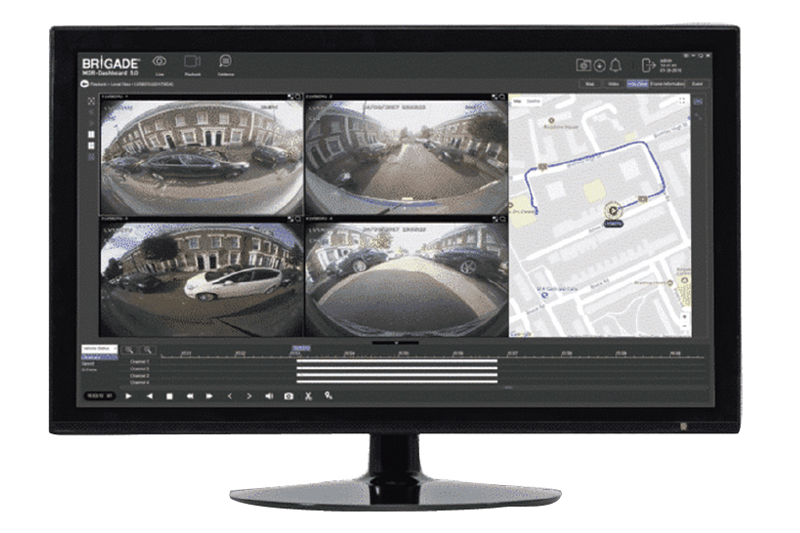
Emily Hardy, Marketing Director for Brigade Electronics, outlines how fleets can avoid compromising on driver safety, whilst preventing driver fatigue and distractions.
The shortage of HGV drivers in the UK has become a huge problem for fleet managers, affecting supply chains, retailers and, ultimately, the consumer.
Exacerbated by the pandemic and the UK’s withdrawal from the EU, the recruitment crisis shows no sign of slowing. A bottleneck in the HGV driver testing system means there are not enough newly qualified drivers, while experienced truckers – including many EU nationals – are no longer working in the UK. Add to this an ageing workforce and little incentive for young drivers or females to join the industry and the perfect storm has been created.
The scale of the problem
It’s estimated that the shortage of drivers will reach up to 100,000, with warnings that supplies could be severely affected throughout autumn and in the run-up to Christmas. Most recently, this shortage of drivers was partially responsible for the lack of fuel reaching filling stations, causing petrol stations across the UK to run dry and resulting in long queues at the pumps.
In July 2021, the government announced temporary measures to address the issue, including an increase in the amount of legal driving hours per day from nine to 10. The move was welcomed by wholesale distributors, but condemned by others in the haulage industry, including the Road Haulage Association (RHA).
“This is madness when the logistics industry has collectively and specifically advised against it,” comments RHA CEO Richard Burnett. “Loading more hours on to drivers that are already exhausted is not the answer – this will only push more to leave. It also risks road safety.”
Safety is paramount for the industry and keeping on top of the relevant legislation is key for fleet operators, especially in the current climate where regulations are shifting to address the ongoing crisis.
Rules for driver hours are complex and vary from country to country and region to region. If a haulage company decides to take advantage of the extra one hour daily driving allowance, they should notify the Department for Transport. Meticulous records must be kept to ensure hours are not extended further.

Steps to take
During such difficult times for the industry, technology can come to the rescue and help fleet managers keep on top of the ever increasing workload. For example, Brigade has developed a remote fleet management system that has the ability to meet many of the challenges facing today’s haulage professionals.
Fitting safety devices and vehicle CCTV to a fleet will also aid operators with attracting new recruits by providing additional peace of mind for drivers and allowing them to operate their vehicle with more confidence.
Vehicle CCTV, such as Brigade’s mobile digital recording systems (MDR), allows fleet managers to live track vehicles, and provides numerous additional benefits for operators when linked to its 4G cloud service, BRIDGE.
This includes location tracking so that managers can find their fleet anytime and anywhere, geo-fencing capabilities so managers can identify when vehicles are entering or leaving specific areas, and trigger warnings that instantly notify fleet managers of incidents. Drivers can also send an instant notification in the event of an emergency.
Vehicle CCTV can also provide drivers and operators with an additional layer of safety and security by acting as a digital witness and providing irrefutable evidence in the event of an incident or false claims.
Sadly, there is no magic wand to solve the current recruitment issues, but by fine-tuning operations, haulage companies will be better placed to sustain productivity over the difficult months ahead while protecting the safety of drivers and other road users.
What about driver fatigue?
Operating large commercial vehicles takes a great deal of precision and skill. Drivers have to undertake rigorous training to ensure they can effectively manage and manoeuvre their lorries safely and proficiently.
However, driving can also be highly pressurised with numerous demands placed on drivers, including working to tight deadlines, operating in confined spaces and travelling in difficult conditions, such as harsh weather or darkness. Drivers must also be able to concentrate for long periods and be prepared to work alone for lengthy stretches.
There’s no doubt that working as a commercial driver is a demanding job and that safety is a top priority for fleet operators. However, driver fatigue and distractions can still cause serious hazards for drivers and other road users. Worldwide, it is estimated that between 10% and 20% of all road crashes are fatigue-related, while approximately 8% are caused by the driver being distracted.

Eliminating blind spots
While driver visibility can be aided by passive systems, such as mirrors and cameras, these still require driver input in order to spot objects or people. In the time it takes a driver to check mirrors and react, a vehicle could travel as far as 10 metres, even at speeds as low as 3 mph. If, for any reason, the driver is not looking at their mirror at a precise moment, because their concentration is elsewhere, then this can cause problems.
A camera or mirror alone will not alert a driver should a person or object be in a blind spot. If the driver is not looking, they will not see that something is in the immediate vicinity of their vehicle. This is why vehicle safety systems that require a driver to take immediate action through the provision of audible alerts and warning sounds are crucial to maintaining the highest road safety standards. These active systems will notify a driver instantaneously when a vehicle or object is in their blind spot, ensuring a driver can react immediately and prevent a collision.
Preventing false alerts
Ultrasonic detection systems have helped to save countless lives by warning the driver of moving and stationary objects nearby and alerting vulnerable road users of a vehicle’s proximity. Cost-effective and reliable, the sensor systems are fitted to the sides, rear, and front of the vehicle to detect objects in blind spots, where cyclists or pedestrians can otherwise go undetected.
Latest developments mean the sensors now offer predictive technology to gather detection data, such as the speed, direction and distance of a cyclist from the vehicle. This data is used to calculate the risk of collision, which significantly reduces the threat of false alarms, helping to prevent driver fatigue and increasing confidence in warning sounds.
Remote fleet management
As well as supporting driver training, installing vehicle CCTV provides a range of other benefits. These include providing proof against insurance claims, providing protection for drivers who may have been wrongly accused as the cause of an incident, providing irrefutable evidence in the case of accidents and legal proceedings, and encouraging driver best practice, resulting in less vehicle damage and fewer accidents. Additionally, vehicle CCTV also helps to deter vandalism and offers peace of mind for passengers and drivers.
While vehicle CCTV has been available for many years, improvements in functionality and usability, such as 4G connectivity, are paving the way for a rise in remote fleet management resulting in greater efficiency, reduced costs and enhanced safety for operators.
For example, Brigade’s MDR with Bridge allows fleet managers to live track vehicles, geo-fencing capabilities so managers can identify when vehicles are entering or leaving specific areas and trigger warnings that instantly notify fleet managers of incidents. For drivers, they can also send an instant notification in the event of an emergency.








